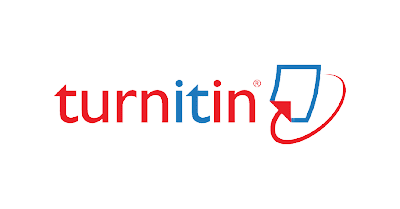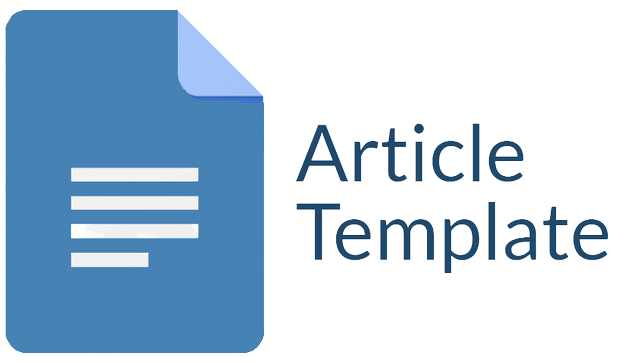PENGARUH PENERAPAN ALUR MERDEKA TERHADAP KEMAMPUAN LITERASI FINANSIAL SISWA DI KELAS V
Abstract
The aim of this research is to determine the effect of implementing the independent flow on students' financial literacy abilities. Financial literacy is an understanding and skills regarding understanding concepts, risks and context in financial matters. The research uses quantitative methods where this research uses and collects systematic and structured data from the beginning to the end of data collection. The total population studied was 8 samples with the sample being in class V North Gombak DICTIONARY Study Studio, Selangor, Malaysia. The research was based on students' lack of understanding of financial literacy, so they were unable to manage their finances wisely. This lack of understanding is due to a lack of education regarding financial literacy in both formal and non-formal education. The results of this research show that the application of the independent flow to students' financial literacy skills is very influential and can provide students with an understanding and skills regarding financial literacy which can be seen from the T-Test Sig 2 Tailed = 0.000 < 0.05 which is stated to be very influential, so it can be concluded that the application The independent flow is very influential on the development of students' abilities in terms of student financial literacy and can be applied in the learning process.
Downloads
References
Balaka, M. Y. (2022). Metode penelitian Kuantitatif. Metodologi Penelitian Pendidikan Kualitatif, 1, 130.
Batty dkk. (2015). Experimental Evidence on the Effects of Financial Education on Elementary School Students’ Knowledge, Behavior, and Attitudes. Journal of Consumer Affairs. Journal of Consumer Affairs, 49(1).
Delgadillo, L. (2014). Financial Clarity: Education, Literacy, Capability, Conseling, Planning, and Coaching. Family and Consumer Sciences Research. Family and Consumer Sciences Research Journal, 43(1).
Hikmah, Y. (2020). Literasi Keuangan Pada Siswa Sekolah Dasar Di Kota Depok, Provinsi Jawa Barat, Indonesia. Jurnal Pengabdian Kepada Masyarakat, 26(2), 103. https://doi.org/10.24114/jpkm.v26i2.16780
Huston. (2010). Measuring Financial Literacy. Journal of Cunsumer Affair, 44(2–3).
Jakson. (2013). Cha-Ching Money Smart Kids Fact Sheet. North America: Discovery Education.
Laila, V., Hadi, S., & Subanji, S. (2019). Pelaksanaan Pendidikan Literasi Finansial pada Siswa Sekolah Dasar. Jurnal Pendidikan: Teori, Penelitian, Dan Pengembangan, 4(11), 1491. https://doi.org/10.17977/jptpp.v4i11.13016
Lusardi et Al. (2010). Financial Literacy Among The Young. Ournal of Consumer Affairs, 44(2).
Mustikawati, E. (2020). Pentingnya Literasi Keuangan Anak Sekolah Dasar Melalui Program Market Day Di SDIT LHI. Jurnal Pendidikan: Riset Dan Konseptual, 4(3), 431–436. http://journal.unublitar.ac.id/pendidikan/index.php/Riset_Konseptual/article/download/247/250
Romadoni. (2015). Pengaruh Status Sosial Ekonomi Dan Pendidikan Pengelolaan Keuangan Di Keluarga Terhadap Literasi Keuangan Siswa SMK Negeri 1 Surabaya. Jurnal Ekonomi Pendidikan Dan Kewirausahaan, 3(1).
Sugiyono, P. D. (2022). Metode Penelitian Kuantitatif, Kualitatif, dan R&D (2nd ed.). ALFABETA.
Widiyati, I. (2012). Faktor-Faktor Yang Mempengaruhi Literasi Finansial Mahasiswa Fakultas Ekonomi Dan Bisnis Universitas Brawijaya. Jurnal Akuntansi Dan Pendidikan, 1.
Copyright (c) 2024 Mauli Al Ihsan, Syamsuyurnita Syamsuyurnita, Suci Perwita Sari, Ismail Saleh Nasution

This work is licensed under a Creative Commons Attribution-ShareAlike 4.0 International License.
Jurnal allows anyone to compose, correct, and do derivative works, even for commercial purposes, as long as they credit for the original work. This license is the freest. It is recommended for maximum distribution and use of licensed material.
The submitted paper is assumed not to contain any proprietary materials that are not protected by patent rights or patent applications; The responsibility for technical content and protection of proprietary materials rests with the authors and their organizations and not the responsibility of journal or its editorial staff. The primary (first/appropriate) author is responsible for ensuring that the article has been viewed and approved by all other authors. The author's responsibility is to obtain all necessary copyright waivers to use any copyrighted material in the manuscript before submission.
Jurnal Pendidikan, Sains dan Teknologi allows the author(s) to hold the copyright without restrictions and allow the author(s) to retain publishing rights without restrictions. Jurnal Pendidikan, Sains dan Teknologi CC-BY-SA or an equivalent license as the optimal license for the publication, distribution, use, and reuse of scholarly work. Jurnal Pendidikan, Sains dan Teknologi allows the author(s) to hold the copyright without restrictions and allow the author(s) to retain publishing rights without restrictions. Jurnal Pendidikan, Sains dan Teknologi CC-BY-SA or an equivalent license as the optimal license for the publication, distribution, use, and reuse of scholarly work.
In developing strategy and setting priorities Jurnal Pendidikan, Sains dan Teknologi recognize that free access is better than priced access, libre access is better than free access, and libre under CC-BY-SA or the equivalent is better than libre under more restrictive open licenses. We should achieve what we can when we can. We should not delay achieving free in order to achieve libre, and we should not stop with free when we can achieve libre.
Jurnal Pendidikan, Sains dan Teknologi is licensed under a Creative Commons Attribution-ShareAlike 4.0 International License.
You are free to:
- Share a copy and redistribute the material in any medium or format
- Adapt a remix, transform, and build upon the material for any purpose, even commercially.
- The licensor cannot revoke these freedoms as long as you follow the license terms.






